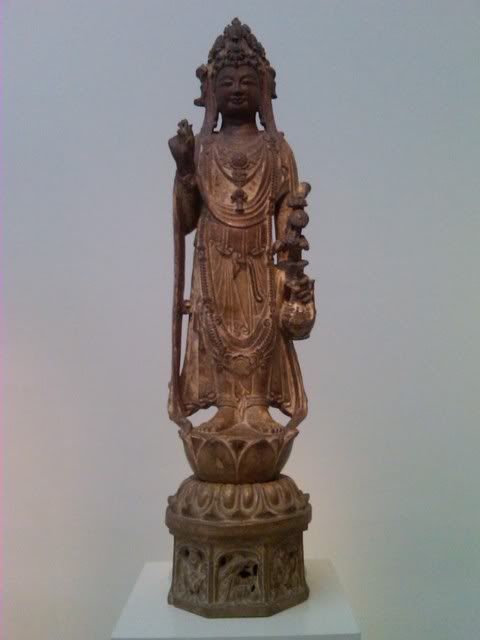Background information about Islam and its art.
Islam was found by Prophet Muhammad in the early seventh century A.D. on the Arabian Peninsula. In 622 Muhammad and his companions were forced to leave Mecca for Medina. This emigration marks the beginning of the Islamic calendar. After the Prophet's death in 632, Islam spread rapidly both as a religion and a political power from Middle East and as far east as India and western China. In spite of regional and ethnic differences, the richly varied peoples were united within the religion, cultural, and political community of Islam. As the religion of Islam presents a way of life and serves as a cohesive force, the art produced by and for Muslim societies has general identifying and unifying characteristics. There are three basic components of Islamic ornaments: calligraphy, geometric patterns, and floral/vegetable designs. Arabic letters lend themselves to pleasing forms and rhythms. Various calligraphic script adorned not only Qur'an manuscripts and other written works but also formed a significant part of architectural decorative programs and the ornamentation of ceramics, metal works, glass, wood and stone objects, and textile. Geometric designs of incredible variety, subtlety, complexity, richness, and harmony proliferate in Islamic decoration. Floral and vegetable motifs, frequently used in a wide range of scrolling patterns, are essential qualities of Islamic art. In addition to calligraphy and geometric or vegetable decoration, artists employed figural and animal imagery. The ban against figural imagery does not appear in the Qur'an but grew out of the Hadith (traditions of the Prophet), spurred by the perceived danger of idolatry. However, countries or cultures that had a strong tradition of figural imagery in the arts before the advent of Islam, such as Iran, continued it afterward in a secular sphere.
The works that interested me were collected from early period of Islamic art, 650-1000 A.D. The use of bold calligraphy in copying Qur'an as well as for decorative purposes is the most important of innovations, but equally important are the technological and artistic challenges in the creation of cluster-painted ceramics, relief-cut glass, jewelry, and inscribed textiles.
This helmet was made in Iran, 18th century. It was made of steel and was decorated with a Qur'anic verses with gold as well as mention of name of God. What surprises me about this helmet is its complex design.I have cropped the picture so that you could see the Arabic callig
These two Qur'an manuscripts were written on two leaves. The artists used ink, gold, and colors when writing verses on the leaves. There are marks and patterns on the leaves as well. It belonged to Eastern Islamic lands, late 11th-early 12th century. It is written in a classical Arabic. Today's Qur'an are written in a simple Arabic in order to make it readable for non-Arabic speaking Muslims and nations.
This is the manuscript of the Divan ("Poetic Works") of Sultan Husain Baiqara. While writing this poetic book in Persian, the artist used ink colors, and gold on paper. What is interesting about this book is that the artist drew colorful birds and head of lion as well as flowers making the poems more interesting.















